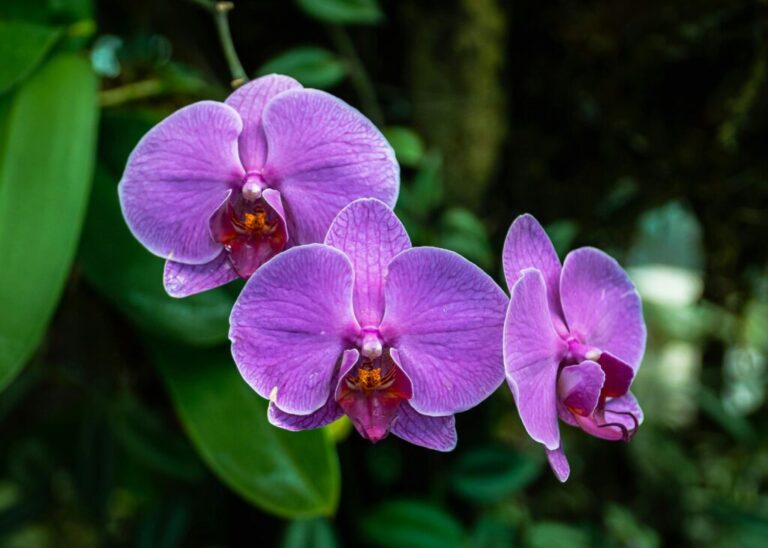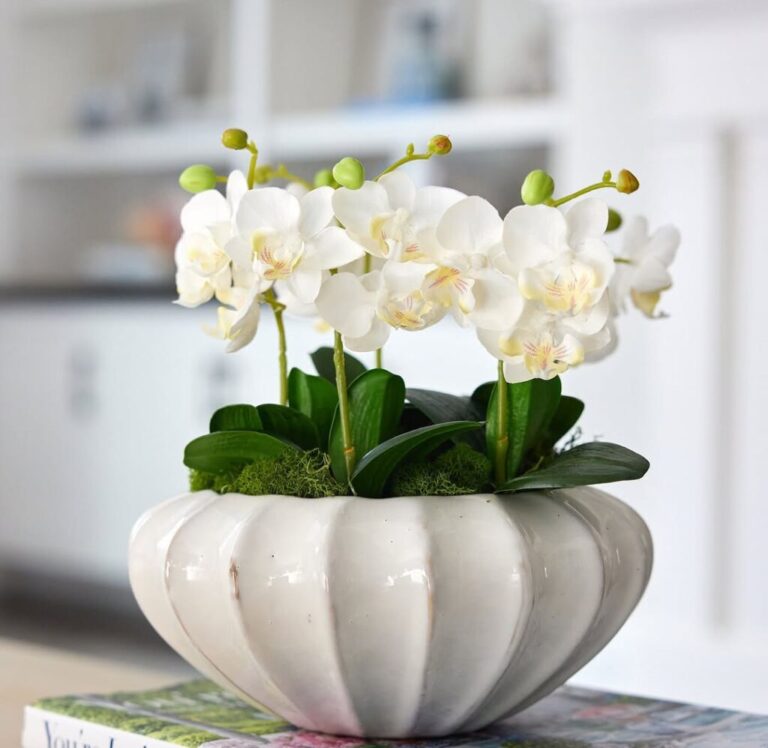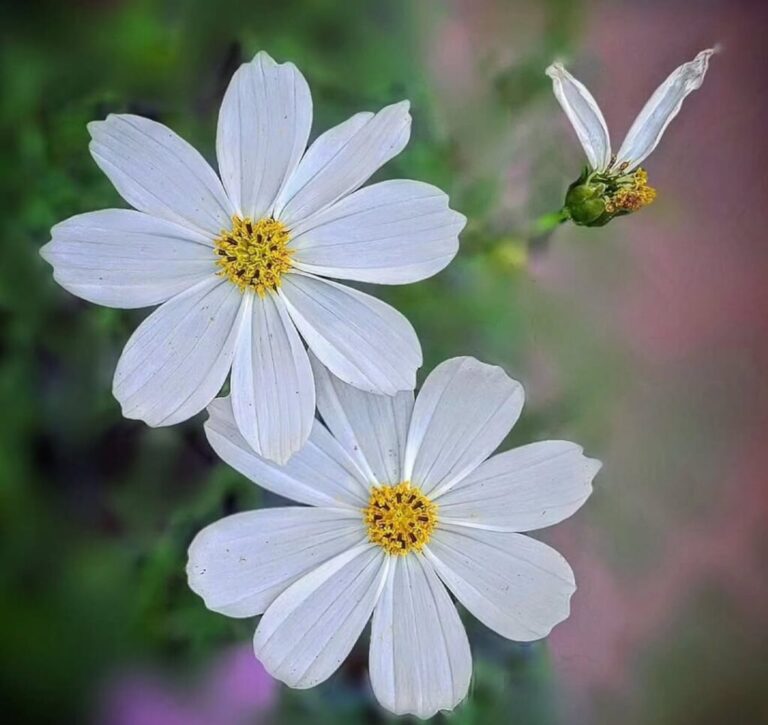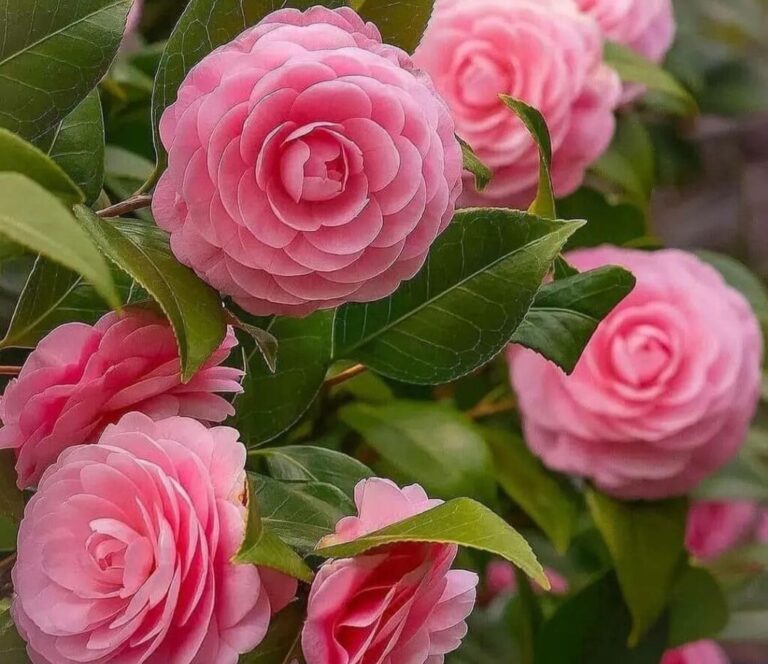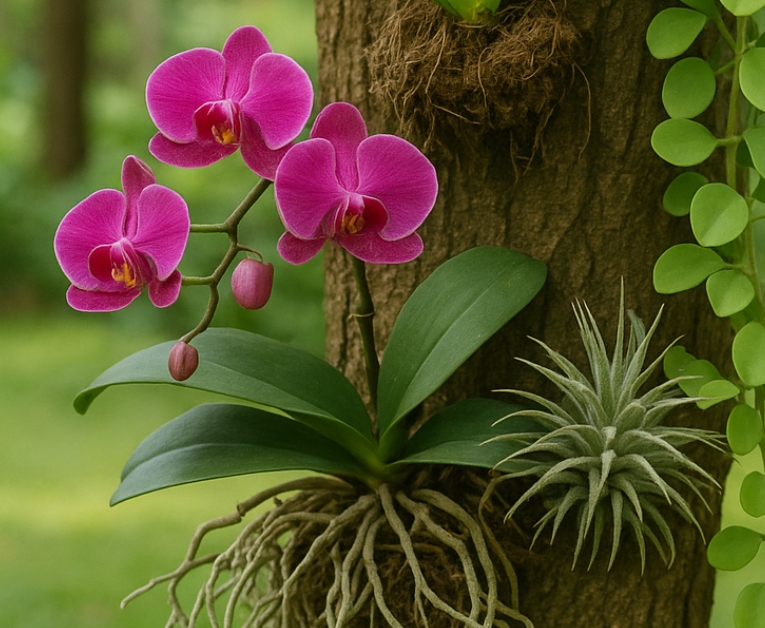Is Your Orchid Stuck Orchids are undoubtedly some of the most elegant and mesmerising plants, but their bloom cycles can be puzzling for many plant owners. If your orchid has stopped blooming, you may feel concerned, but rest assured—you’re not alone in this experience. Orchids, like all plants, have specific needs, and sometimes, even small changes can have a significant impact on their growth and blooming patterns.
The good news is that with the right care, patience, and a little bit of attention, you can help your orchid bloom once again. In this post, we will explore the common reasons why orchids stop blooming and provide you with actionable, simple steps to revive them and bring back the beautiful flowers.
- 1 Is Your Orchid Stuck
- 2 Why Do Orchids Stop Blooming?
- 3 Steps to Bring Back Your Orchid’s Blooms
- 4 1. Evaluate the Lighting Conditions
- 5 2. Adjust Your Watering Routine
- 6 3. Provide the Right Temperature and Humidity
- 7 4. Fertilise sometimes
- 8 5. Mimic the Orchid’s Natural Dormancy
- 9 6. Repot if Necessary
- 10 Signs That Your Orchid Is Getting Ready to Bloom
- 11 Common Mistakes to Avoid
- 12 FAQs
Is Your Orchid Stuck

Why Do Orchids Stop Blooming?
Before diving into the solutions, it’s essential to understand why orchids stop blooming in the first place. Several factors can contribute to this, and sometimes, it’s a combination of issues. Let’s examine the typical offenders:
Lack of Adequate Light
Orchids are epiphytes, meaning they naturally grow in environments where they receive plenty of indirect light. Without the right amount of light, an orchid can enter a dormant phase and fail to produce flowers. Too little light can cause the plant to become weak, and in extreme cases, it might stop blooming altogether.
Improper Watering
Overwatering or underwatering is one of the most common mistakes when caring for orchids. Overwatering can lead to root rot, while underwatering can dehydrate the plant, leaving it stressed and unable to bloom. The key is to find a balance—one that keeps the roots hydrated but not soggy.
Temperature Stress
Orchids have specific temperature requirements, and fluctuations in temperature can affect their ability to bloom. Orchids like Phalaenopsis prefer a stable range of temperatures, with slightly cooler nights and warmer days. If temperatures are too high or too low, it can interrupt the bloom cycle.
Nutrient Deficiency For orchids to develop and bloom, they require nutrients. If the plant isn’t receiving enough nutrition, it may not have the energy to produce flowers. Using the wrong kind of fertiliser or failing to fertilise regularly can prevent your orchid from reaching its blooming potential.
Dormancy Period Ignored
Some orchids, such as Phalaenopsis and Cattleya, require a dormant period to rest before blooming again. Ignoring this period or not providing the right conditions for dormancy can delay or completely halt flowering.
Steps to Bring Back Your Orchid’s Blooms
Now that we know some of the reasons why your orchid may be stuck, let’s dive into the actionable steps you can take to encourage it to bloom again. These simple but effective strategies will help you revitalise your orchid and see those beautiful flowers return.
1. Evaluate the Lighting Conditions
Why It Matters: Orchids, especially Phalaenopsis, Dendrobium, and Cattleya, thrive in bright, indirect light. If they don’t receive enough light, they may stop blooming altogether. Orchids that are placed in too much shade will have difficulty producing flowers, as they rely on light to trigger the blooming process. However, too much direct sunlight can scorch the leaves, so it’s important to strike a balance.
Solution:
Location: Place your orchid near an east- or south-facing window where it will receive indirect sunlight. Orchids should not be exposed to the harsh midday sun, so a sheer curtain can help filter the light.
Artificial Lighting: If natural light is limited or if you live in a region with long winters, consider using artificial grow lights. Choose a grow light specifically designed for orchids, as this will mimic the natural light they would receive in the wild. You’ll want to give your orchid around 12 to 14 hours of light a day, depending on the season.
2. Adjust Your Watering Routine
Why It Matters: Orchids are very sensitive to water conditions. Both overwatering and underwatering can harm the plant’s roots and hinder blooming. If the orchid’s roots sit in stagnant water for too long, they can rot. On the other hand, if the plant is not getting enough moisture, it will dry out and become stressed. The key is to ensure the roots stay hydrated but not soggy.
Solution:
Watering Frequency: Water your orchid when the top inch of the potting medium feels dry. Depending on the climate and time of year, this could be once a week or more frequently. Be sure to check the potting medium regularly to ensure that it isn’t drying out too fast or staying too wet.
Water Quality: Minerals and chemicals present in tap water are undesirable to orchids. Use filtered water, rainwater, or distilled water to prevent the accumulation of minerals and salts that could damage the roots.
Drainage: Always ensure that the orchid pot has proper drainage holes. Water should not sit in the bottom of the pot. If it does, it could lead to root rot. If you notice water accumulating in the pot’s saucer, empty it immediately.
3. Provide the Right Temperature and Humidity
Why It Matters: Orchids are tropical plants that flourish in warm, humid environments. If the temperature or humidity falls outside the optimal range, your orchid may become stressed and fail to bloom. The temperature should remain consistent, with a slight drop at night to mimic the natural environment. Humidity is equally important for orchids, as dry air can cause the plant to dry out and stunt its growth.
Solution:
Temperature: The ideal temperature range for your orchid is 70–85°F (21–29°C) during the day and 55–65°F (13–18°C) at night. A small nighttime temperature drop can encourage the orchid’s bloom cycle.
Humidity: Orchids thrive in environments with humidity levels between 50% and 70%. To maintain this, use a humidifier, especially during the winter when indoor air can become dry. Alternatively, you can place a shallow dish of water with pebbles near your orchid, or you could mist the leaves regularly, but take care not to go overboard because too much moisture on the foliage can cause fungal problems.
4. Fertilise sometimes
Why It Matters: Orchids require nutrients to grow and bloom. A lack of essential nutrients, such as nitrogen, phosphorus, and potassium, can delay or prevent flowering. Using the right type of fertiliser in the right amounts ensures that your orchid has the necessary energy for blooming.
Solution:
Fertiliser Type: Use a balanced orchid fertiliser, such as a 20-20-20 formula. This fertiliser will provide your orchid with all the essential nutrients it needs to thrive.
Fertilising Schedule: During the growing season (spring through summer), fertilise your orchid every two weeks. In the dormant period (fall through winter), you can reduce the fertilising frequency to once a month.
Avoid Over-fertilising: Too much fertiliser can burn the roots and harm your plant. Always follow the manufacturer’s instructions on the fertiliser packaging.
5. Mimic the Orchid’s Natural Dormancy
Why It Matters: Some orchid varieties, particularly Phalaenopsis, require a dormant period to prepare for the next blooming cycle. During this time, the plant needs slightly cooler temperatures and reduced watering to rest. If you do not provide this rest period, the orchid may not bloom for another cycle.
Solution:
Temperature Adjustment: For about two to three weeks, reduce the temperature at night to around 55-60°F (13-15°C). This drop in temperature will signal to your orchid that it is time to enter dormancy and rest before blooming.
Watering: Slightly reduce your watering schedule during this dormancy period. Be cautious not to let the orchid dry out completely, but give it a little less water than usual to encourage the plant to rest.
6. Repot if Necessary
Why It Matters: Over time, the potting medium can break down, becoming compacted and reducing the airflow to the roots. Orchids require good root health to thrive, and a lack of airflow can prevent blooming. Repotting every couple of years ensures the roots have fresh, healthy medium to grow in.
Solution:
When to Repot: Repot your orchid every 1-2 years, or whenever you notice that the potting medium is breaking down or the orchid has outgrown its pot. Repotting during the growing season (spring or summer) is ideal, as this gives the orchid time to adjust to its new environment.
Potting Medium: Use a well-draining orchid mix made of bark, sphagnum moss, or a mix designed specifically for orchids. Avoid using regular potting soil, as it holds too much moisture.
Signs That Your Orchid Is Getting Ready to Bloom
Once you’ve followed these steps and your orchid is back on track, there are several signs you can look for that indicate it’s ready to bloom again:
New Growth: Watch for the appearance of new flower spikes or shoots emerging from the base of the plant or along the flower stem. This is a good indication that the orchid is preparing to bloom.
Swollen Nodes: If you notice small bumps or swollen areas along the flower spike, these are likely buds that will eventually open into flowers.
Healthy Roots: Healthy, green, and firm roots indicate a thriving orchid, which is more likely to bloom.
Common Mistakes to Avoid
To give your orchid the best chance of blooming, be mindful of these common mistakes:
Ignoring Air Circulation: Orchids need proper airflow to prevent fungal diseases. Make sure they’re not crowded or placed in stagnant air.
Using Tap Water: The minerals in tap water can accumulate in the potting medium, damaging the roots. Always use distilled or rainwater.
Over-Fertilising: Growth can be stunted and roots burnt by excessive fertiliser. Make sure you adhere to the suggested feeding schedule.
Reviving your orchid and encouraging it to bloom again is a rewarding experience that requires a bit of patience and attention to detail. By following these simple steps, you’ll be able to create an optimal environment for your orchid, ensuring that it blooms beautifully for you year after year. Remember, each orchid is unique, and slight adjustments may be needed to find the perfect balance. Stay consistent, be patient, and soon enough, you’ll be rewarded with the sight of your orchid’s stunning blooms.
FAQs
Why is my orchid stuck and not growing?
If your orchid seems stuck and is not growing, it could be due to several factors such as inadequate light, improper watering, or nutrient deficiencies. Ensure your orchid is in a well-lit spot, with proper watering and feeding according to its specific needs.
How do I know if my orchid is stuck?
You might notice that your orchid isn’t producing new flowers or leaves, or the growth appears stagnant. If your orchid’s growth has slowed or stopped entirely, it could be a sign that it’s stuck.
What should I do if my orchid is stuck?
If your orchid is stuck, first check for environmental issues such as low light or poor air circulation. Repotting your orchid, ensuring it has the right soil mix, and providing adequate watering and feeding might help stimulate growth.
Can a lack of sunlight cause my orchid to get stuck?
Yes, orchids need proper lighting to thrive. If your orchid is not receiving enough light, it may become stuck and stop growing. Place it in a location with indirect sunlight, or consider using artificial grow lights.
Can I fix a stuck orchid by repotting it?
Yes, if your orchid is stuck, repotting it can help by providing fresh, nutrient-rich soil and better root space. Make sure to use an appropriate orchid potting mix and a well-draining pot.
What are the signs that my orchid needs more water?
If your orchid appears stuck, check the moisture level of the soil. Orchids generally need water when the top inch of the soil is dry. Overwatering or underwatering can both stunt growth, causing your orchid to become stuck
Is fertilizing my orchid important to prevent it from getting stuck?
Yes, regular fertilizing can prevent your orchid from getting stuck. Use a balanced orchid fertilizer to provide the necessary nutrients, but avoid over-fertilizing as it can harm the plant.
What causes a stuck orchid to stop blooming?
A stuck orchid may stop blooming due to several reasons, including inadequate light, improper temperature, or nutrient imbalance. Make sure your orchid is in the right environment with the proper care to encourage blooming.
How can I encourage a stuck orchid to bloom again?
To encourage a stuck orchid to bloom, eHow can I encourage a stuck orchid to bloom again?nsure it gets adequate light, humidity, and temperature. You may need to adjust your watering and fertilizing routine, and sometimes, moving your orchid to a new location with better conditions can help revive its blooming cycle.
Can a stuck orchid recover
Yes, a stuck orchid can recover with the right care. Ensure it receives the proper amount of light, water, and nutrients. Repotting and pruning damaged or dead roots can also help stimulate new growth and revival.


